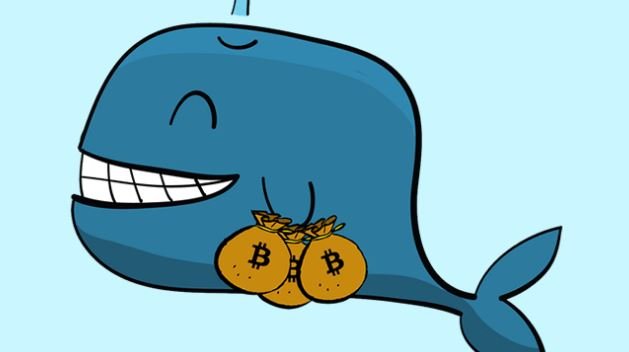For an investor to outperform the market, someone else must underperform. That is a simple arithmetic fact.
In a fair and regulated environment, investors have equal access to information. Winners and losers are determined by whoever can make a better prediction.
But cryptocurrency is the wild, wild west. Market participants don’t play fair and they can profit at the expense of others.
Insider Traders
Under Rule 10b5–1, the SEC defines insider trading as “any securities transaction made when the person behind the trade is aware of nonpublic material information.” Insider trading is illegal in almost all traditional markets. In a research paper published in 2010, Qin Lei found empirical evidence that insiders were able to consistently beat the stock market.
Over the last year, we’ve seen many high-profile cases of insider trading in the cryptocurrency market.
Coinbase — The Bitcoin Cash Incident
On December 19, 2017, Coinbase tweeted it would add Bitcoin Cash to its exchange. But before the announcement was made public, both the trading volume and the price of Bitcoin Cash suspiciously surged.
On March 1, Coinbase was hit with a class action lawsuit. The full court document is available here.
South Korea Financial Supervisory Service (FSS)
Even regulators are being investigated for insider trading. Korean FSS officials knew ahead of time that new cryptocurrency trading restrictionswould be put in place. Yet, they still made trades before the announcement.
The chief of the FSS, Choi Hyung-sik, confirmed on Jan. 18 that trading violations had occurred. Despite being caught red-handed, another FSS official responded that there was technically “no code of ethics or conduct for virtual currencies and therefore difficult to issue any punishment.”
The examples mentioned above are just a few high-profile cases. Insider trading runs rampant in the cryptocurrency space. Very often, prices and trading volumes will pump right before an exchange announces a new coin.
To many, insider trading is no longer a surprise but rather something that “just happens” in an unregulated market.
Whales :
A whale is simply a colloquial way to describe an investor who is able to manipulate markets by mobilizing large amounts of capital.
Most crypto investors treat whales like the boogeyman. They’ve never had a personal encounter, but swear that whales are responsible for large market swings everywhere.
STOP-LOSS HUNTING :
Whales intentionally push the price down in order to trigger stop-loss orders. Then they turn around and buy coins from these stop-loss orders for cheap and wait for the market to recover.
This strategy works well for coins with low trading volumes and small order books. With enough coins, whales can push down the price by introducing a slew of market-price sell orders.
Short/Long Hunting :
This is another form of market manipulation, but one that only exchanges can pull off.
Let’s see how this works on Bitmex for BTC.
A trader puts up $100 as margin for a 100x leveraged long position of $10,000.
The bankruptcy price is set at $9,900 which is the market price minus the margin.
However, Bitmex forces a liquidation if the price falls to $9,950, just $50 (0.5%) from the initial entry price.
When the market price reaches the liquidation price, Bitmex forces a sell at the bankruptcy price ($9,900).
At liquidation, investors lose their entire margin and pay the high fee at the 100x leveraged rate.
SPOOFING :
Another common strategy whales use to manipulate the market is called spoofing. It means to bid or offer with intent to cancel before the orders are filled. The goal of spoofing is to send false signals to investors.
Wash Trading :
The last strategy we’ll cover is wash trading. In a wash trade, an investor takes both buy and sell positions. This may be done in order to:
Artificially inflate trading volume in order to send a bullish signal
Manipulate prices on markets with small order books
So we’ve talked about insider traders and whales.
The final type of traders we’re going to talk about are the pump & dump group executives.
Pump & Dump Group Executives :
Pump & dump (P&D) is a form of market manipulation that involves purchasing a cheap asset, artificially inflating its price, and then dumping the asset a higher price
THIS IS HOW TRADERS MANUPULATES THE MARKET.


Hi! I am a robot. I just upvoted you! I found similar content that readers might be interested in:
https://hackernoon.com/the-3-types-of-cryptocurrency-traders-that-are-kicking-your-ass-d765e4a4ad32
Hi I upvote you.... I am new to this platfrom plz visite my profile........ if you like my contents then follow me and upvote me :) @palcrypto
great information
Thanx
hi, I followed you & upvoted you.
Congratulations @nisar71! You have completed some achievement on Steemit and have been rewarded with new badge(s) :
Click on the badge to view your Board of Honor.
If you no longer want to receive notifications, reply to this comment with the word
STOPDo not miss the last post from @steemitboard!
Participate in the SteemitBoard World Cup Contest!
Collect World Cup badges and win free SBD
Support the Gold Sponsors of the contest: @good-karma and @lukestokes